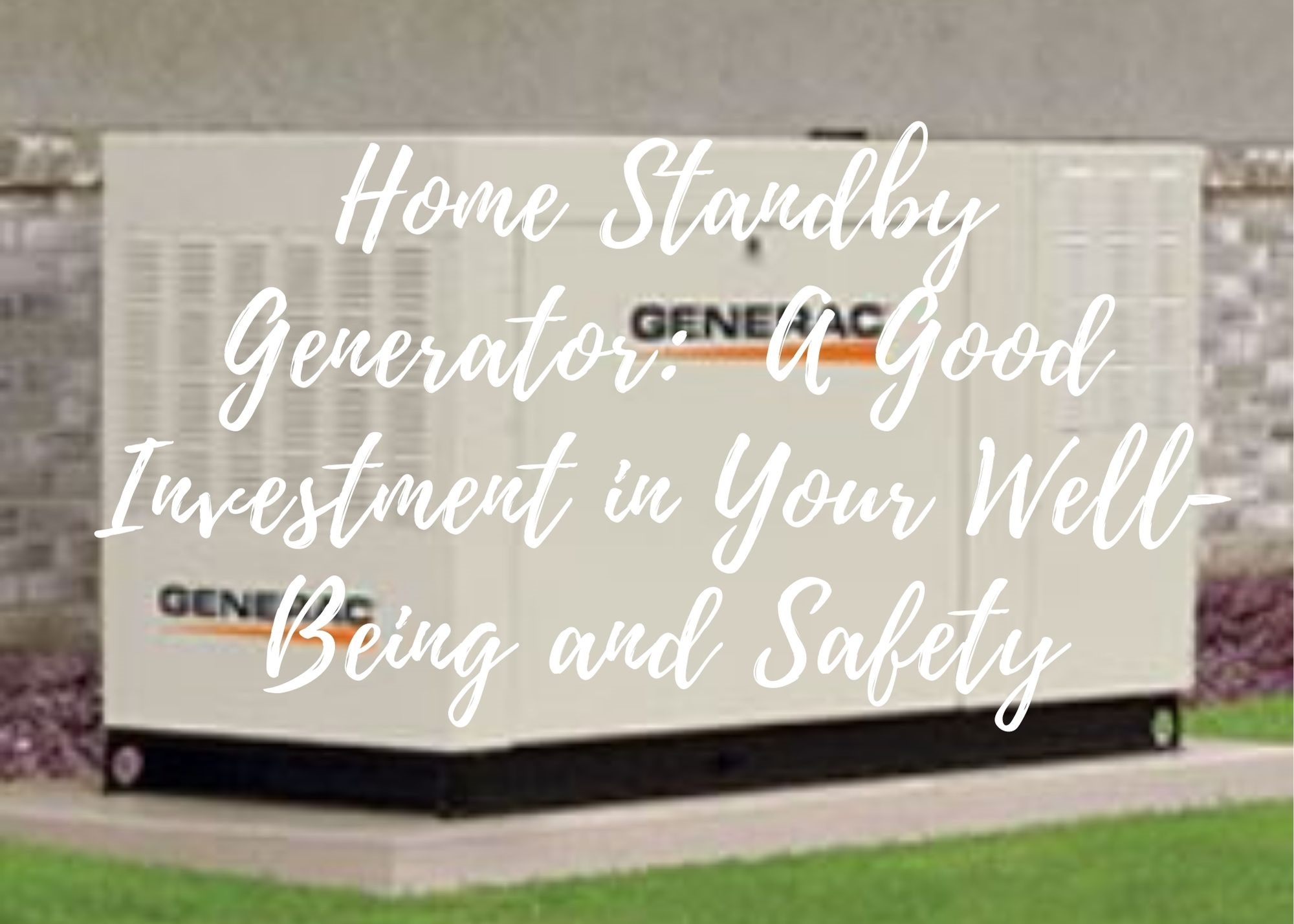Portable generators are smaller systems that can be wheeled to any location outside of the home and are powered by gasoline. Extension cords running from the portable generator are brought inside to deliver power to specific appliances such as a furnace, refrigerator, hot water tank, sump pump and lighting fixtures.
Portable systems can be purchased at your local home improvement store and do not require installation by a licensed electrician. While portable systems are less costly, the main drawback is their limited ability to deliver voltage to your entire home. They also require you to be at your home to operate the system, as they will not work automatically when you are away or out of town.
Permanent standby generators are larger systems placed on a pad outside the home and are powered by fixed energy sources such as a natural gas line, diesel fuel or a liquid propane tank. These systems can immediately detect a loss of power from the local utility and will transfer power generation to the standby generator system (and away from the utility) via a “transfer switch”.
These permanent standby systems are capable of assuming the full voltage workload from your utility and should be installed by a licensed electrician who is experienced with this kind of work. While these systems are more costly than portable systems, they can deliver power to your entire home and can operate automatically when you are away from home.
As a general rule, permanent standby generators offer the following advantages over portable generators: more powerful automotive-style engines, less noise during operation, greater load management capability, fuel efficiency, capable of automatic operation vs. manual operation.
What Is Involved in Selecting a Standby Generator and an Installer?
Whether you choose to buy a portable generator or a permanent standby generator system, you must first take an inventory of appliances that you want to operate in the event of a complete power loss. Your inventory may be a couple of appliances or it may be your entire home.
If you have a smaller budget and only want to power a few appliances, you will want to go the portable generator route. The decision of what specific portable generator to buy at your local home improvement store will be driven by the number appliances that you would like to power as portable generators come in different sizes. A salesman that has been properly trained will be able to help you select a model that best fits your needs.
If you have a larger budget and would like to deliver power to a good portion (or all) of your home, you will want a permanent standby generator system. Here, you will want to engage the services of a licensed electrician who is experienced with the installation and servicing of permanent standby generators.
It is very important that you work with an electrician that is experienced with home generators (not all electricians are). It is also a good idea to work with someone who is “factory-authorized” by one of the leading generator manufacturers such as Generac, Cummins, Kohler or Briggs & Stratton). The process is very simple. Your electrician will come to your home to discuss your needs.
A few questions to be covered include:
-
- Do you want to power your entire home in the event of a grid outage?
- Or do you only to want to power a select number of appliances?
- What are the load requirements of appliances to be powered by your generator?
- Do you want your system to turn on automatically when the power goes out or do you want a (less costly) system that requires manual operation?
- What kind of transfer switch do you want for your generator–manual or automatic?
- What equipment is most compatible with your climate?
Once you have discussed these questions and others, your electrical contractor will then be able to discuss your equipment options and their estimated installed cost. As a general rule, the total cost of your project will be equally divided between equipment and labor. A qualified electrical contractor will be knowledgeable about local permitting requirements, the proper placement of equipment, setbacks from windows & doors, selection of your fuel source, etc. He will also coordinate your project with the local power utility. Lastly, your discussion should include warranties and a possible ongoing service agreement.
How Long Does It Take To Install a Permanent Standby Generator?
Once you have selected a standby generator system with your contractor and have signed a contract, he will then have to take care of several things before actual installation can begin. These include: securing of permits from your municipality, locating your equipment site to conform with code, preparing your equipment site (removing shrubs, laying a concrete slab or pea gravel base) and providing for your fuel source (existing natural gas line, diesel fuel tank or a liquid propane tank).
While the permitting process and prep work can take 2-4 weeks on average, actual installation of your system should only take a day or two.
What Are Transfer Switches And Do I Need an Automatic Transfer Switch?
All permanent standby generators require a transfer switch to deliver power to the home in the event of a power loss from the grid. Transfer switches change your source of power from the utility to your backup generator. Transfer switches also provide safety to utility repairmen by isolating generator-produced power from utility lines so that power surges do not take place.
The two most common types of transfer switches are a Manual Switch and an Automatic Transfer Switch. As the name implies, a Manual Switch requires the homeowner to start the generator manually when the power goes out and then switch the home over to receive power from the generator. An Automatic Transfer Switch requires no intervention by the homeowner as it automatically senses a power outage and instructs the standby generator to turn on. When power from the grid is restored, the automatic transfer switch senses the change and turns the generator off.
While automatic transfer switches are more costly than manual switches, they offer the key advantage of requiring no action by the homeowner. If a power outage occurs while you are on vacation, an automatic transfer switch allows you to enjoy peace of mind knowing that your home will never be without power.
Who Installs Standby Generators?
Portable generators require no installation and can be bought at most “big box” home improvement stores and stored in your garage. However, larger permanent standby generators require professional consultation, installation and servicing. Many electrical contractors are experienced in the installation and maintenance of standby generators but it is important to do your due diligence as you shop around. You do not want to engage the services of an electrician who is “learning on the job”!
You will find that electrical contractors that are experienced in installing fixed home generator systems will bring many skills to the table–recommending the proper system for your needs, knowledge of local zoning requirements, post installation servicing capability and more. Note that many of the leading generator manufacturers (Generac, Kohler, Cummins, Briggs & Stratton) have factory-authorized dealers in most areas, so that is a way you can build a list of potential installers.

